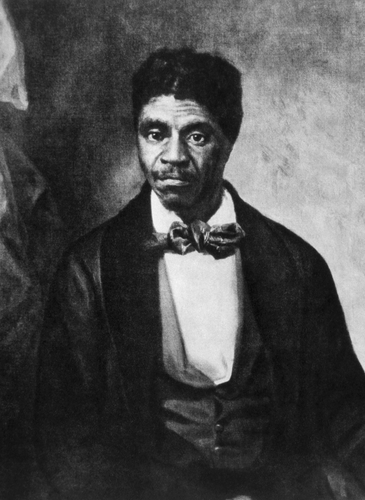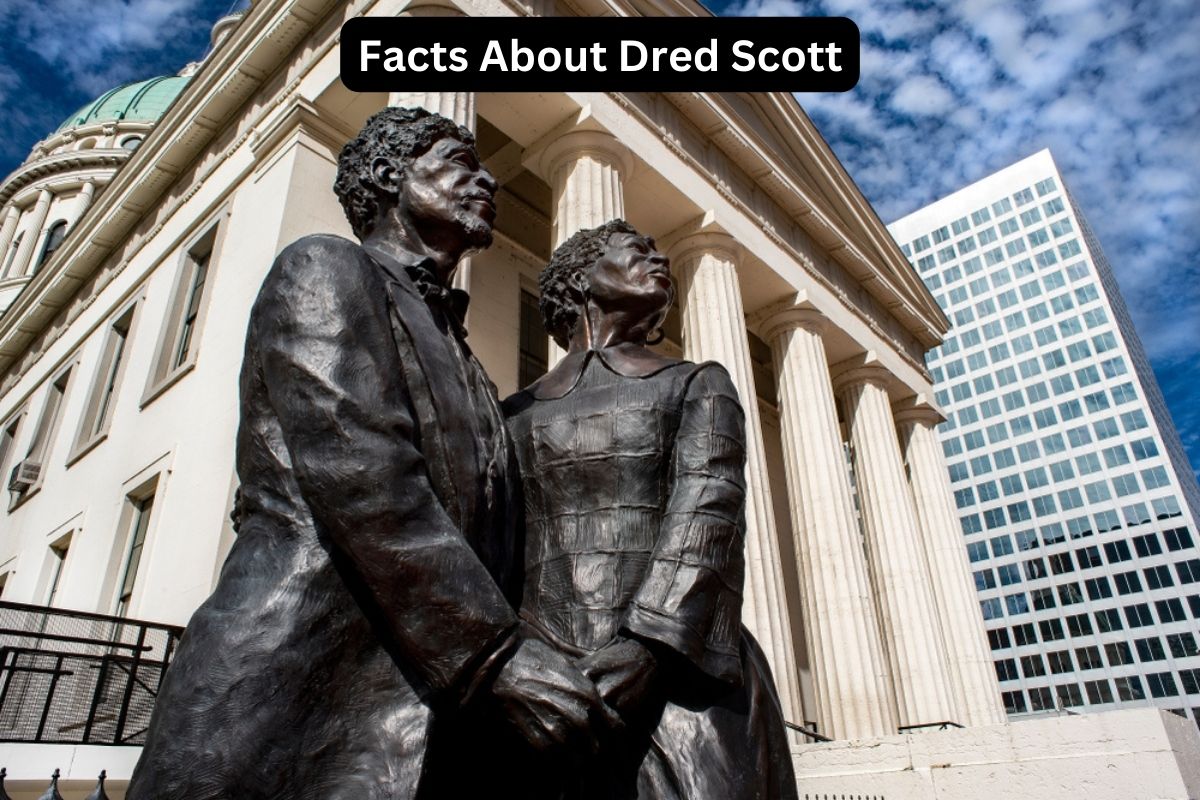The landmark case of “Dred Scott v. Sandford” stands as a pivotal juncture in American history, symbolizing the nation’s complex and contentious relationship with slavery, citizenship, and states’ rights.
The case involved Dred Scott, an enslaved man who sought his freedom through the legal system, and culminated in a decision by the U.S. Supreme Court that reverberated across the nation, intensifying tensions and ultimately contributing to the road toward the Civil War.
This case’s far-reaching impact extends into the realms of constitutional interpretation, political strife, and the evolution of civil rights in the United States.
Dred Scott Facts
1. Dred Scott was a slave born around 1799 in Virginia
Dred Scott was born into slavery around 1799 in Southampton County, Virginia. He was owned by the Blow family until he was sold to Dr. John Emerson, an army surgeon, in 1830.
Dr. Emerson’s military duties required him to move frequently, which had significant implications for Scott’s legal case.
2. He sued for his freedom in 1846, arguing that his time in free territories made him free
In 1846, Dred Scott, along with his wife Harriet, filed a lawsuit for their freedom in a Missouri state court.
They argued that their residence in free territories, specifically the free state of Illinois and the Wisconsin Territory (where slavery was prohibited according to the Missouri Compromise), had made them legally free individuals.
Scott’s case was backed by prominent abolitionists, who believed that this case could challenge the institution of slavery in the United States.

3. The case reached the U.S. Supreme Court in 1857
Scott’s case went through a series of legal proceedings before reaching the U.S. Supreme Court. The case was initially heard in a Missouri state court, where the jury initially ruled in favor of Scott’s freedom.
However, this decision was later overturned by the Missouri Supreme Court, leading Scott’s case to be appealed to the U.S. Supreme Court.
The case was formally known as “Dred Scott v. Sandford,” with John F. A. Sandford (spelled Sanford in legal documents) being John F. A. Sanford, the brother of Irene Emerson, Dr. Emerson’s widow and Scott’s owner at that point.
4. Chief Justice Roger B. Taney delivered the majority opinion against Scott
In 1857, Chief Justice Roger B. Taney delivered the majority opinion of the U.S. Supreme Court in the case of “Dred Scott v. Sandford.”
The Court ruled 7-2 against Dred Scott. Taney’s opinion held that African Americans, whether free or enslaved, could not be considered citizens of the United States and therefore had no legal standing to sue in federal courts.
This decision also invalidated the earlier ruling by the Missouri Supreme Court in Scott’s favor.
5. The Court ruled 7-2 that enslaved people were not citizens and couldn’t sue in federal courts
The Court’s ruling on citizenship had significant implications beyond Scott’s individual case. The decision essentially established that people of African descent could not be U.S. citizens, even if they were born or naturalized in the United States.
Additionally, the Court declared that Congress had no authority to prohibit slavery in the territories, a position that directly contradicted the Missouri Compromise of 1820, which had limited the spread of slavery.
6. The decision stated Congress couldn’t ban slavery in territories, upsetting the Missouri Compromise
The Court’s stance on the Missouri Compromise and Congress’s authority to restrict slavery stirred significant controversy. The Missouri Compromise had maintained a balance between free and slave states by prohibiting slavery north of a certain line.
The Dred Scott decision’s assertion that Congress couldn’t ban slavery in the territories heightened tensions between Northern and Southern states.
Abolitionists and anti-slavery advocates were outraged by the decision’s pro-slavery implications, while Southern states generally welcomed it.
7. The ruling intensified tensions between Northern and Southern states over slavery
The Dred Scott decision had a profound political impact, exacerbating the already tense relations between Northern and Southern states.
Many in the North saw the decision as evidence of a Southern-dominated Supreme Court actively promoting and protecting the institution of slavery.
This perception fueled anti-slavery sentiments and further galvanized the abolitionist movement. Conversely, in the South, the decision was largely celebrated as a victory for states’ rights and the defense of slavery.
8. The decision played a role in the lead-up to the Civil War
The decision significantly contributed to the intensification of tensions between the North and the South over the issue of slavery.
The ruling was a catalyst for heightened debates over the expansion of slavery into the newly acquired western territories.
The pro-slavery stance of the decision alarmed Northerners who feared that the institution of slavery could spread to areas where it had previously been prohibited.
9. The Emancipation Proclamation and the 14th Amendment diminished the decision’s impact
The Dred Scott decision’s impact was partially nullified by subsequent events. Abraham Lincoln’s Emancipation Proclamation, issued in 1863 during the Civil War, declared that all enslaved individuals in Confederate-held territory were to be considered free.
While the proclamation did not immediately free all enslaved people, it signaled a significant shift in the Union’s stance on slavery and laid the groundwork for the eventual abolition of slavery in the United States.
10. The 14th Amendment granted citizenship and overturned the Dred Scott decision’s key points
The legal principles established by the Dred Scott decision were fundamentally challenged and reversed by the ratification of the 14th Amendment to the U.S. Constitution in 1868.
The amendment granted citizenship to all persons born or naturalized in the United States and prohibited states from denying any person equal protection under the law.
This amendment effectively overturned the Dred Scott decision’s ruling on the citizenship rights of African Americans and reinforced the federal government’s authority over civil rights.
In summary, the Dred Scott decision was a pivotal moment in American history, deepening divisions between the North and the South and contributing to the lead-up of the Civil War. While the decision initially had a detrimental impact on the rights of African Americans, subsequent events and constitutional amendments would work to correct the injustices it perpetuated.
